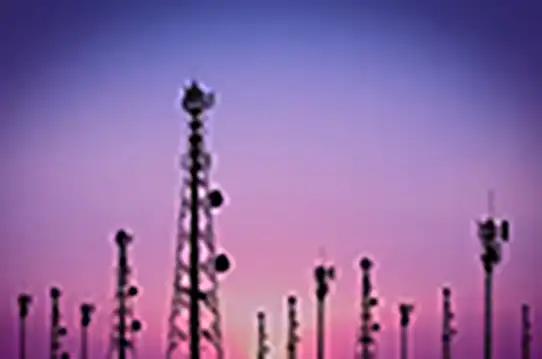Check out our White Paper Series!
A complete library of helpful advice and survival guides for every aspect of system monitoring and control.
1-800-693-0351
Have a specific question? Ask our team of expert engineers and get a specific answer!
Sign up for the next DPS Factory Training!

Whether you're new to our equipment or you've used it for years, DPS factory training is the best way to get more from your monitoring.
Reserve Your Seat TodayAn automatic transmission system (ATS) is necessary for maintaining uninterrupted broadcasting operations. It helps ensure that your TV and radio programs are aired smoothly and without interruptions.
Let's look at:

As you likely already know, automatic (or advanced) transmission systems are responsible for the quality of a broadcast channel or network. If the system's performance is not optimal, the broadcast quality suffers or (especially in the digital age) leads to a complete loss of signal.
Imagine that your ATS is underperforming. Your broadcasting site/network will have shortcomings in several areas:
Automatic transmission systems are responsible for delivering a seamless and high-quality viewing or listening experience. When the transmission systems are performing as desired, they perform several standard functions:
Like virtually any kind of telecom device or system, you protect an ATS by monitoring it - and its surrounding environmental temperature, voltage, etc.
By knowing exactly what alarms your ATS and nearby sensors reporting, you can anticipate and resolve small problems before they affect your broadcast.
This generally involves the standard 2-part monitoring architecture:

The reliability of your broadcast network heavily depends on its ability to quickly detect and respond to faults. NetGuardian RTUs, as one example, are equipped with advanced monitoring and notification systems that instantly alert network operators to potential issues.
Features like automatic email and SMS notifications ensure that any problems are addressed promptly. This minimizes downtime and maintaining broadcast quality.
You can also use control relay outputs to command devices to reboot/reset. The ability to remotely diagnose and reset devices also allows for rapid response, further enhancing network reliability.
The environmental monitoring capabilities of RTUs mean that they can also reliably supervise studio conditions. Conditions, such as temperature and humidity, which could affect equipment performance are able to be monitored to prevent any damages before they occur.
It's important when shopping for remote monitoring RTUs to remember how important integration is. Even if an RTU is generally "better" for your needs, that's worthless if it won't cleanly integrate into your environment. This includes things like protocols, communication channels / transport, and even simple things like rack/DIN/wall mounting styles.
Continuing with our example, NetGuardian RTUs are engineered to integrate seamlessly with many different sites, offering flexible protocol & transport capabilities (mention your requirements when ordering to get the right model) that minimize setup time and technical challenges. You also have access to various NetGuardian physical chassis designs, which offer mounting options like 19" or 23" rack mounts (ears), wall mounting, or DIN rail mounting.
This allows for easy installation and configuration among varying sites, which is critical for maintaining continuous broadcasting operations.
The built-in web interfaces provide intuitive management tools that you can access from a remote location. This allows the technical teams to quickly adjust settings or troubleshoot issues from any location.
Broadcast networks often utilize a variety of equipment from different manufacturers, each supporting different protocols for remote monitoring. Yours is likely no different.
We built NetGuardian RTUs and T/Mon (our central master station) to be a good fit due in diverse networks like this with versatile protocol support. For instance, NetGuardians support SNMP (v1, v2c, v3) to cover thousands of different device types that use this open standard. T/Mon has hundreds of device templates and can interpret 35+ different alarm protocols.
Note that these protocols are distinct from any digital broadcast protocols you may be using. Instead, these are machine-to-machine (M2M) protocols used for remote site management. They're typically used in many different environments, not just in broadcasting.
Multiprotocol support ensures that you can integrate your RTUs and master station into any existing infrastructure without compatibility issues, simplifying network management, and reducing operational costs.
Your goal should be to expand and future-proof your broadcast network. As your network expands, the need for a scalable monitoring solution becomes critical.
The NetGuardian series is designed with scalability in mind. The many different sizes of NetGuardian models make the overall NetGuardian lineup capable of handling small, medium, and large sites with great efficiency.
It doesn't matter what issue is present. These RTUs can scale to meet growing network demands without the need for significant additional investments in new hardware.
Now that you understand how valuable remote monitoring can be in a broadcast context like yours, you have to act. But what is your next step?
Call the experts at DPS Telecom to find the perfect solution for your broadcasting site. Our gear covers most monitoring situations. We're also never afraid to admit it if your application is outside of our current product scope. In that case, we'll gladly use our experience and expertise to point you in the right direction.
Call 1-800-622-3314 or email sales@dpstele.com to start taking your next steps toward top-notch remote monitoring.

Andrew Erickson
Andrew Erickson is an Application Engineer at DPS Telecom, a manufacturer of semi-custom remote alarm monitoring systems based in Fresno, California. Andrew brings more than 18 years of experience building site monitoring solutions, developing intuitive user interfaces and documentation, and opt...